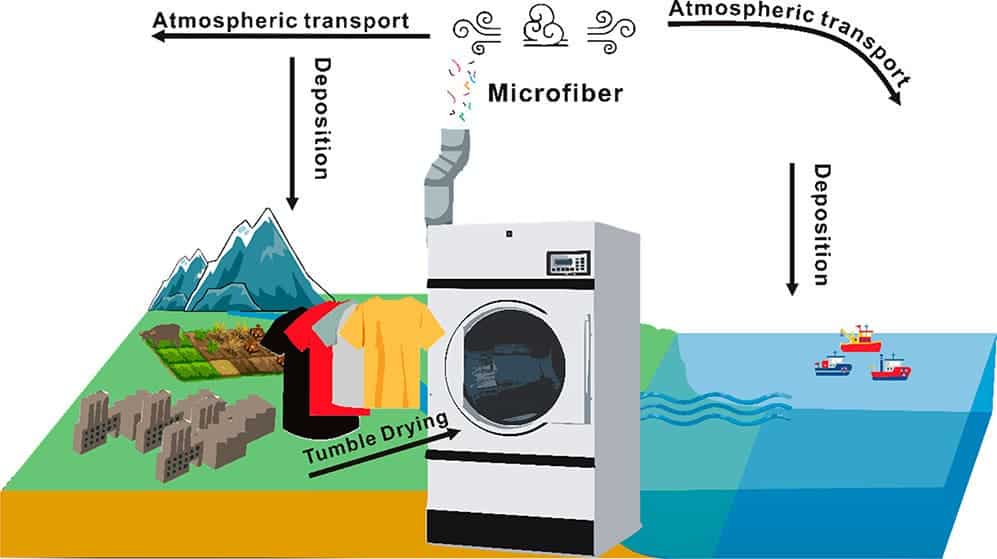We know washing machines release thousands of microfibers (a common type of microplastics) into the water. But tumble dryers are also a problem. A new study found that dryers are the main source of microfiber pollution into the atmosphere, with each dryer responsible for releasing up to 120 million microplastic fibers into the air each year.

Synthetic fibers such as polyester and nylon are widely used to make clothes, with the production of synthetic clothing growing every year. But there’s a catch. During laundering, these can release microfibers into the environment. To date, most studies have focused on washing machines and microfibers, a problem partly solved by treating laundry water in sewage plants.
But that’s not the case with electric clothes dryers, which release masses of microfiber directly into the environment, with nothing to filter them. In the US and Canada, over 80% of households use a clothes dryer and usage numbers are also growing in developing countries, as more and more people are affording (and wanting) dryers.
In a new study, researchers at the City University of Hong Kong and the State Key Laboratory of Marine Pollution (SKLMP) explored the role of household driers as sources of microfiber pollution – estimating that between 90 million and 120 million microfibers are produced and released into the atmosphere by each dryer every year.
“Household tumble dryers can be an important mechanism for releasing textile microfibers to the ambient atmosphere. Because vented air is usually not treated, microfibers are emitted directly through a ventilation pipe connected to the dryer to ambient air, either indoor or outdoor,” the researchers wrote in their paper.
Dryers and microfibers
The team dried clothes made of polyester and cotton in separate 15-minute cycles, using a dryer that had a vent pipe to the outdoors. Then they gathered and counted each airborne particle that escaped the vent. Both cotton and polyester clothes produced microfibers, likely because of the clothes rubbing together in the dryer.

For both fabrics, the dryer released between 1.4 to 40 times more microfibers than what’s generated by washing machines – based on previous studies for the same amount of clothing. The release of polyester microfibers also increased as more clothes were added to the dryer. This wasn’t the case with cotton microfibers, as the fibers tend to clump together and can’t stay airborne.
As well as highlighting the problem, the researchers explored a possible solution. They designed a filter that could prevent microplastics from being spread from washing machines and are now working on a similar one for clothes dryers. However, they warned that microplastics could still be released into the air if people just put the fibers collected by the filter in the dustbin.
“Before the realization of better replacements for synthetic fibers such as polyester, it is feasible to minimize the release of microfibers from tumble driers by the installation of a simple, engineered filtration device at the end of the emission pipeline,” the researchers wrote.
The study was published in the journal Environmental Science and Technology Letters.









